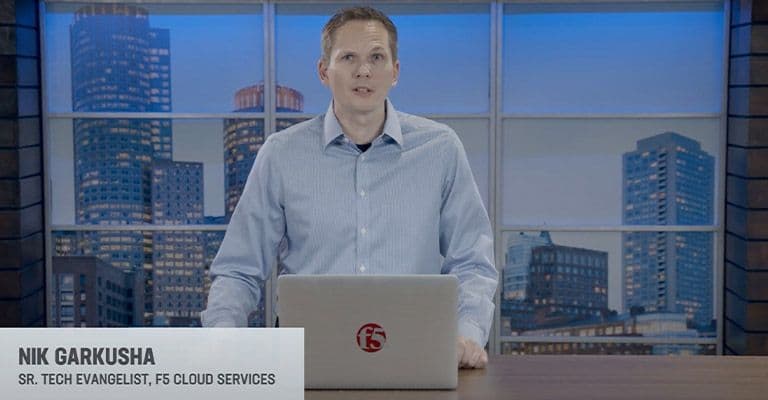“Native cloud services work—up to a point. They speed development of applications that meet the needs of a majority of customers. However, native services are specific to a single cloud provider and they lack the flexibility to accommodate customers whose needs don’t align with those of the majority. Integrating third party vendors that offer common security features and policies across multiple cloud providers may help you accommodate applications that outgrow native services, allowing the continued use of multiple native services in a multi-cloud environment while ensuring consistent and compliant security postures across your applications.”
Common Policies or Native Services—Addressing Multi-Cloud Security
Native cloud security services reduce operational efficiency in multi-cloud environments.
Application security is shifting left. As a result, DevOps teams are increasingly responsible for security. While DevOps expertise with development lifecycle processes allows them to effectively introduce security requirements early in the software lifecycle, these teams may not have the resources to anticipate threats, or sufficient breadth of expertise to implement the various security solutions and policies needed to protect modern applications.
Native cloud security services provide DevOps and business unit developers platform-specific options that work well for many application requirements. However, as organizations increasingly adopt multi-cloud solutions, the costs of these native services begin to outweigh the benefits. Where a few security services sufficed on a single cloud platform, many security services are needed to provide the same protection on two or more cloud platforms. Each platform has their own identity management requirements, security policies, APIs, and managerial procedures, reducing overall efficiency. Increasing operational efficiency and security is a top priority for enterprise digital transformation initiatives and enterprise leadership objectives.
Reduced Efficiency Due to Management Overhead
The implementation and management complexity associated with native security services is the first significant source of operational inefficiency. The difficulties associated with managing all of the components of multiple native security services can have serious negative consequences for a business. Security gaps in misconfigurations were exploited in 66% of attacks (either through attackers exploiting a flaw in the web application firewall to access account credentials or attackers taking advantage of a misconfigured resource). DevOps engineers are tasked with identifying the fastest possible time to market. Reducing the overhead associated with maintaining and understanding security policies across multiple cloud providers can allow DevOps teams to better focus their attention and resources on that goal.
“Challenges to security operations: finding qualified staff (39%), compliance (38%), infrastructure visibility (36%), and challenges with implementing consistent security policies (33%).”
Shifting to a third-party vendor that can implement a consistent security policy across all applications in a multi-cloud environment can significantly reduce the amount of security implementation overhead that falls to the DevOps teams. Using this type of service can reduce the frequency with which security misconfigurations are pushed to production environments. It simplifies the integration of policies and configurations in CI/CD pipelines by providing DevOps teams a set of automation tools that can be used for standardization, which, in turn, allows security services to be integrated into existing enterprise automation toolchains.
Reduced Efficiency Due to Decreased Cloud Infrastructure Security Visibility
Low cloud infrastructure security visibility is another source of reduced operational efficiency that comes with the use of native security services. Although organizations benefit from faster deployment when using native services, 36% of survey respondents admit that these native services do not provide adequate visibility into cloud security infrastructure. While DevOps teams increasingly take on deployment and management for application security, enterprise security oversight, and reporting are still SecOps responsibilities. Distributed and native cloud security services mean that security reporting and analytics will also be distributed and cloud-specific by default. The distributed nature of the analytics obfuscates the security landscape of the system as a whole. As a result, SecOps teams might only be able to give isolated, provider-specific recommendations. Using common security services implemented through a standardized multi-cloud security vendor ensures that the same security policies are shared across all applications. This allows SecOps to make recommendations based from shared security analytics in a way that benefits the entire system.
Reduced Efficiency Due to Increased Compliance Overhead
The need to adopt a multi-cloud security strategy that ensures compliance across different cloud providers is another source of operational inefficiency with native security services. DevOps teams are required to comply with both internal and industry security requirements. Historically, centralized InfoSec teams help establish and audit security controls across applications, particularly in organizations like healthcare and financial services that work with sensitive or protected personal information. With the leftward shift in application security, DevOps is now as responsible for maintaining alignment with enterprise security requirements as SecOps. It is difficult to maintain enterprise security requirements when native security policies are unique to a specific cloud provider, whether that provider is AWS, Azure, or Google Cloud. Audits are also rendered less efficient. Deploying common, multi-cloud security policies reduces the time spent auditing security configurations. The inclusion of visibility solutions can allow an organization to create a one-stop shop that reduces compliance testing complexity and improves cross-team collaboration.
“96% of organizations are concerned about their current level of cloud security. Data loss, detection and response, and multi-cloud management top the list of the biggest concerns among organizations.”
Adopting Common Security Policies Improves Devsecops Efficiency
Changes in application development conventions have increased the security-related responsibilities that fall under the DevOps purview. As a result, it is more accurate to refer to these teams as DevSecOps and recognize this as part of the SecOps security operational model. The continued use of native, provider-specific security policies adds significant managerial overhead, eliminating much of the benefit of the DevOps model. Standardization around a multi-cloud enterprise security solution increases operational efficiency and creates opportunities to connect with new strategic security partners, reducing the potential for a loss of operational efficiency when moving into a multi-cloud environment.
Related Content

F5 Cloud Services Lab Now on GitHub
Learn how DevOps practitioners are adjusting to the application-focused world.
Explore DevCentral